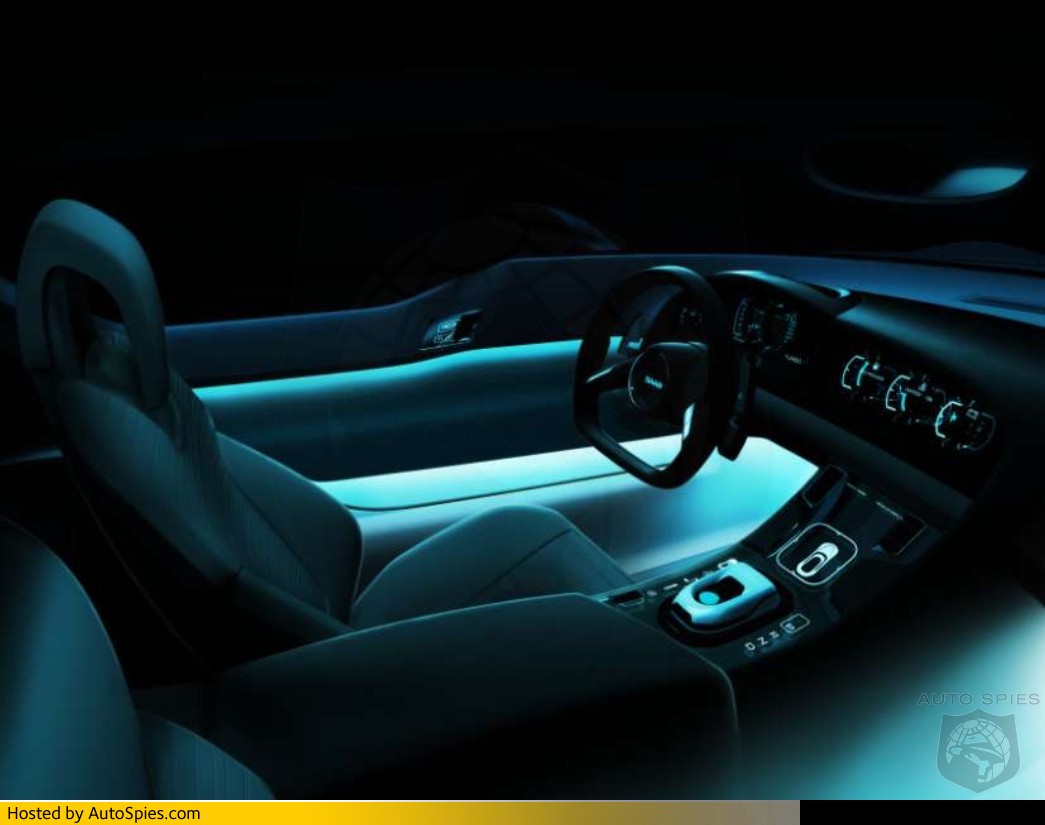
All exterior and interior lighting is by LED (light-emitting diode), which has given the design team new freedom to exploit the compact packaging benefits of a technology that will be featured increasingly in future Saab products.
With weight-saving carbon fiber bodywork, a lightweight powertrain, electronically controlled suspension and all-wheel drive, the Saab Aero X is an exciting driver's car that promises a level of performance to match its looks. Computer simulations anticipate zero to 60mph/100 kph in just 4.9 seconds and a top speed of 155 mph/250 kph (limited).
Despite being so tightly driver-focused, the Aero X still offers surprising practicality, again, a quality you would expect to find in all Saab designs. That dramatically sculpted tail conceals a useful twin storage facility, with a conventional hatch opening and sliding drawer underneath.
"This study shows how the strength of the Saab brand heritage can inspire bold, innovative design," says Bryan Nesbitt, Executive Director, GM Design Europe. "As we move forward with new Saab products, we will remain focused on carefully cultivating this brand equity in the context of Scandinavian design values."
"This concept shows the exciting possibilities that are open to us as we evolve a more progressive design language for the brand," says Jan Åke Jonsson, Saab Automobile's Managing Director. "Our designers, engineers and marketers in Sweden are ideally placed to nurture and communicate the unique DNA of the Saab brand. Their work will ensure that future product proposals express core qualities, such as progressive design, sporty performance and emotional functionality, in a way that is specific to Saab."
The Saab Aero X is the latest in a series of concepts from Saab, each accentuating different brand qualities. These include the 'four-dimensional' 9X (IAA Frankfurt 2001), the 9-3X Cross-over Coupe (Detroit 2002) and the 9-3 Sport Hatch (IAA Frankfurt 2003).
Saab Aero X Background
From Aircraft to Automobiles
Saab's aviation roots go back almost 70 years to 1937, when Svenska Aeroplan Aktiebolaget (Swedish Aircraft Company Limited) was founded in the town of Trollhättan, 45 miles/70 km north of Gothenburg, where Saab cars are still built today on the site of the original aircraft factory.
The company supplied military aircraft to the Swedish Air Force and began diversifying into civil aviation in 1944 and the automotive business in 1947, when its first car, the Saab 92, was unveiled (Saab 91 was a light aircraft used for pilot training). The 92's streamlined, teardrop-shaped bodywork was clearly the work of aircraft engineers and radical for a small production car of the time, as was the use of wind tunnel testing during its design.
The adoption of front-wheel drive for sure-footed handling, excellent roadholding and efficient space utilization was also unconventional for the time - more than a decade before the layout was to become popular in the rest of the auto industry.
Another innovative design from Saab's newly-created car division was the Sonett 1, a lightweight sports car for competition use, unveiled exactly 50 years ago this year. Its 'monocoque' chassis was made from aviation-specification aluminum panels, instead of the usual arrangement of steel beams and tubes. Although common in aircraft construction, Saab was using this design six years before it was introduced to Grand Prix racing.
Today, more than 4 million cars and 4,000 aircraft later, Saab is one name and two companies. The car business, Saab Automobile AB, is now wholly owned by General Motors, the world's largest auto maker, and the Saab Group is a global leader in the application of advanced technologies, specializing in aerospace and defense systems.
Over the years, Saab cars have continued to incorporate aircraft-inspired design features, from wrap-around windshields and cockpit-like ergonomics to green instrument illumination and need-to-know information displays. And the innovative spirit of those early aircraft engineers, including their pioneering attention to safety, continues to be reflected in Saab's unconventional approach to car design.